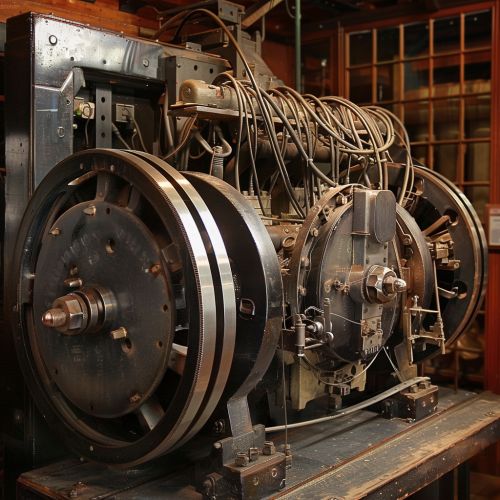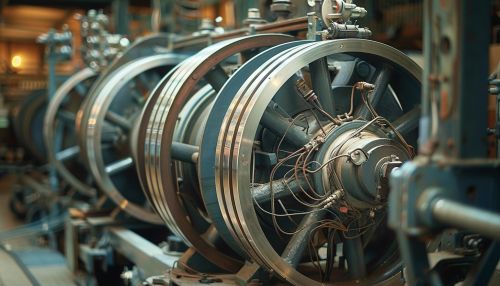Dynamo
History
The term "dynamo" was coined by Michael Faraday for his electrical generator which converted mechanical energy into electrical energy. Faraday's dynamo was the first practical method of generating electricity, and it laid the foundation for the development of electrical power generation as we know it today.
The concept of the dynamo has its roots in the early 19th century, when scientists such as Hans Christian Ørsted, André-Marie Ampère, and Joseph Henry were exploring the relationship between electricity and magnetism. Their work led to the discovery of electromagnetic induction, the principle upon which the dynamo operates.


Principles of Operation
A dynamo operates on the principle of electromagnetic induction, which involves the generation of an electric current by varying a magnetic field. This principle was first discovered by Faraday in 1831, and it is the fundamental mechanism behind the operation of many electrical devices, including transformers, electric motors, and of course, dynamos.
In a dynamo, mechanical energy is used to rotate a coil of wire within a magnetic field. As the coil rotates, the magnetic field through the coil changes, inducing an electric current in the wire. This is known as Faraday's law of electromagnetic induction.
The output of a dynamo is alternating current (AC), because the direction of the induced current changes as the coil rotates through the magnetic field. However, many early dynamos used a device called a commutator to convert the output to direct current (DC).
Types of Dynamos
There are several different types of dynamos, which can be classified based on their design and the type of current they produce.
Direct Current Dynamos
Direct current (DC) dynamos use a commutator to convert the alternating current produced by the dynamo into direct current. The commutator is a type of mechanical switch that reverses the connections to the coil at the points in the rotation where the current would naturally change direction. This ensures that the output current always flows in the same direction.
DC dynamos were widely used in the 19th and early 20th centuries for power generation, but they have largely been replaced by alternators in modern power systems.
Alternating Current Dynamos
Alternating current (AC) dynamos, also known as alternators, do not use a commutator. Instead, they allow the current to change direction with each rotation of the coil, producing an output that alternates between positive and negative. This is the type of current used in most modern power systems, as it can be easily transformed to different voltages and is more efficient to transmit over long distances.
Homopolar Dynamos
A homopolar dynamo is a type of DC dynamo that produces a constant, unidirectional current without the need for a commutator. This is achieved by using a single, stationary magnetic field and a rotating conductor that moves perpendicular to the field. Homopolar dynamos are relatively simple in design, but they are not very efficient and are not commonly used for power generation.
Applications
Dynamos have a wide range of applications, from small-scale power generation to large-scale industrial use.
Power Generation
The primary application of dynamos is in power generation. Large-scale dynamos, often referred to as generators, are used in power plants to convert mechanical energy from a turbine into electrical energy. These dynamos can produce enormous amounts of power, often measured in megawatts (MW).
Transportation
Dynamos are also used in various forms of transportation. For example, many bicycles use a small dynamo to power lights or other electrical devices. In this case, the mechanical energy comes from the rotation of the bicycle wheel.
Industrial Use
In industrial settings, dynamos are often used to power electric motors or other machinery. These dynamos can be tailored to the specific power requirements of the machinery, providing a reliable and efficient source of electricity.
